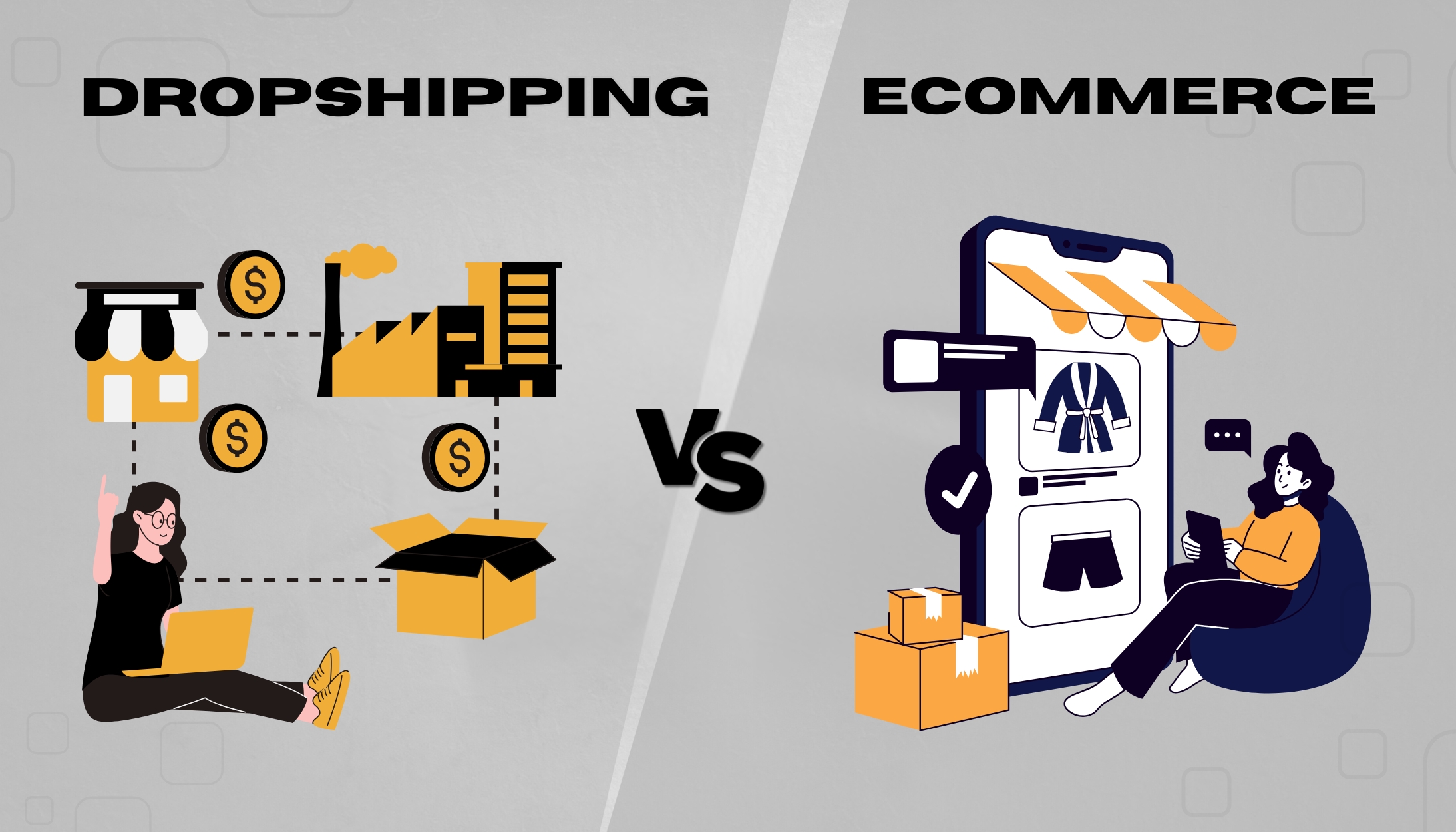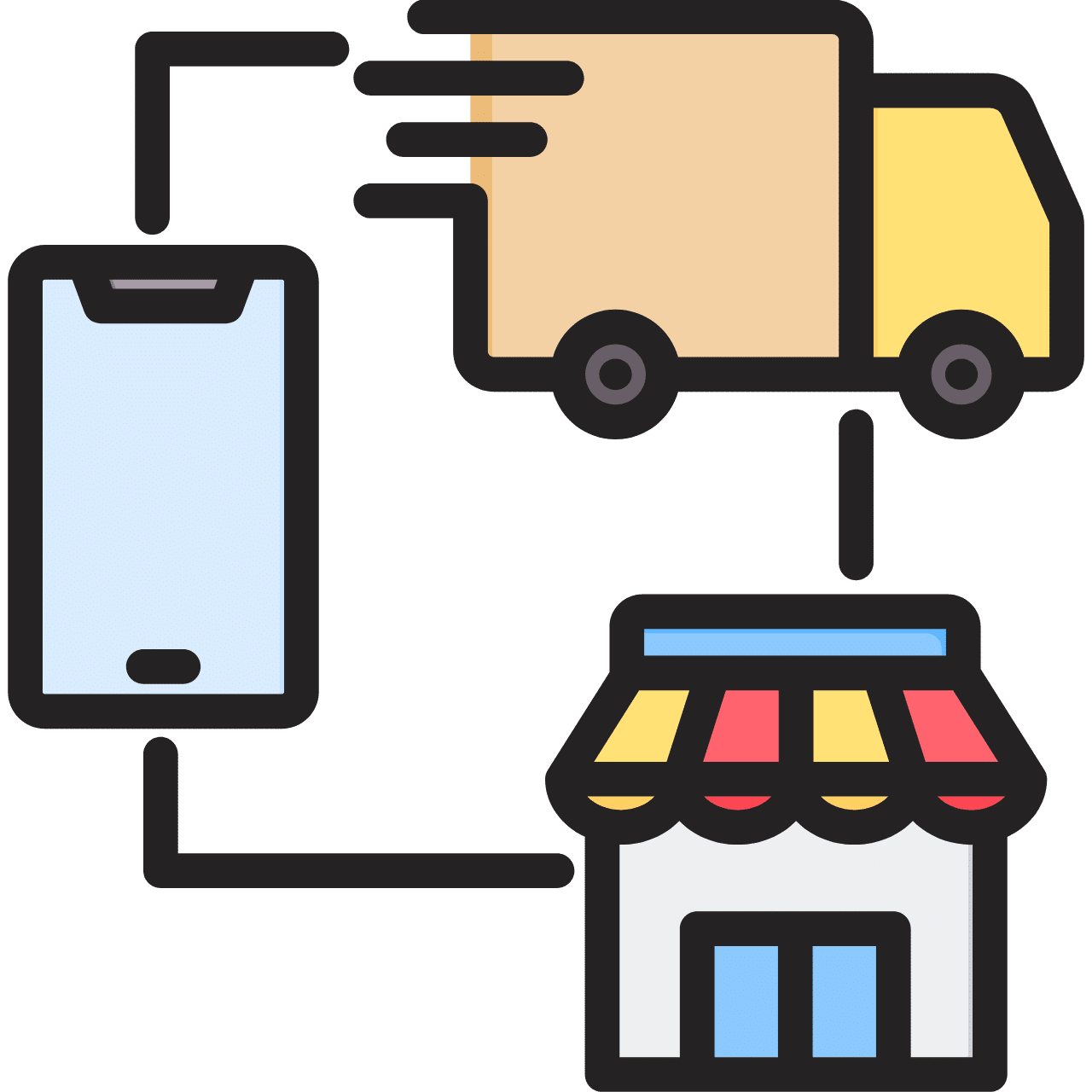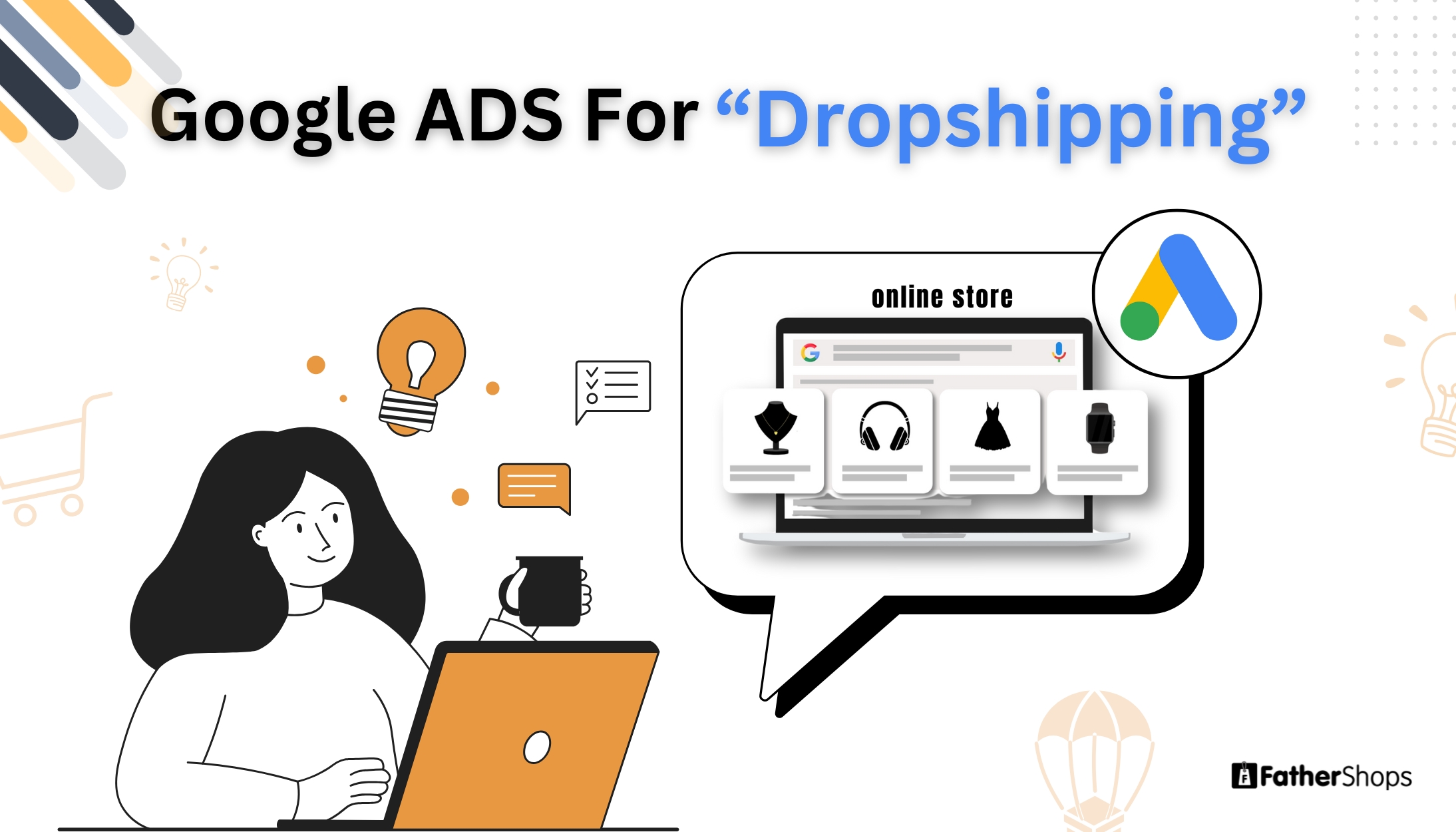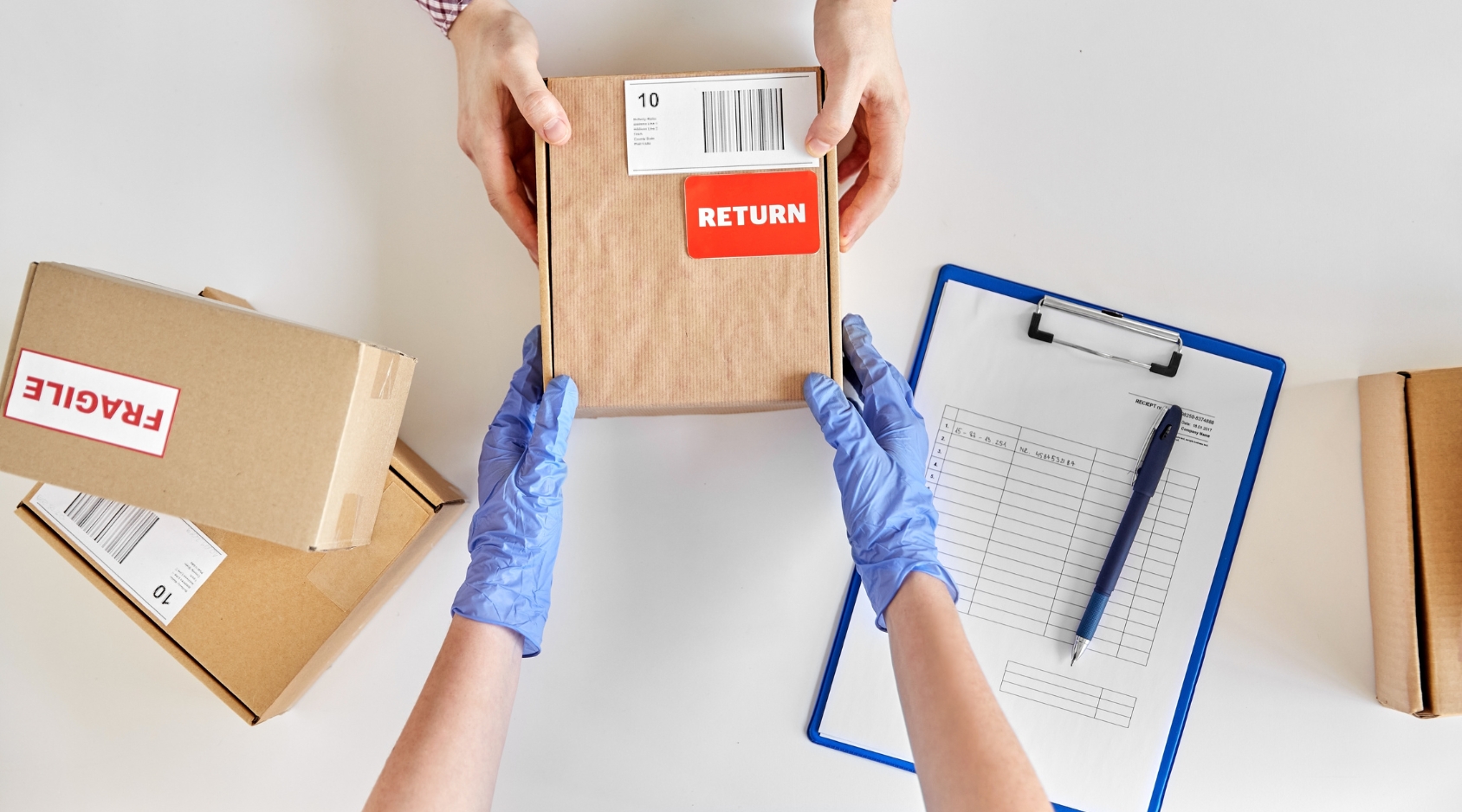Table of Contents
Introduction
The difference between dropshipping and eCommerce lies in how the businesses operate and manage inventory. Here’s a simple breakdown: Dropshipping is easy to start with little upfront cost. You don’t need to buy or store products. When a customer orders from your store, you purchase the product from a supplier, and they ship it directly to the customer. It’s low-risk and hassle-free. eCommerce, on the other hand, involves buying and storing products yourself. You handle the inventory, shipping, and customer orders. While it requires more money and effort, it gives you full control over your products and branding.
This guide will help you understand the difference between dropshipping and eCommerce so you can decide which one fits your business goals. Let’s get started!
What is Dropshipping?
Dropshipping is a straightforward approach to online retail where the online store owner doesn’t keep the products being sold in stock. Instead, when a customer orders a product from the store, the store owner then buys that product from a third-party supplier.
The interesting part is that this supplier also takes care of shipping the product directly to the customer. This means that as a store owner in a dropshipping model, you don’t have to deal with the physical product at all.
You don’t need to worry about stocking items, managing inventory, or handling shipping logistics. Your main focus is on running the online store, marketing the products, and handling customer service.
This method is appealing for its simplicity and low upfront investment, making it a popular choice for entrepreneurs who want to enter the e-commerce world without a significant initial expense.
What is Ecommerce?
E-commerce, short for electronic commerce, is a broad term that encompasses the buying and selling of goods or services via the internet. This modern approach to commerce involves not only the exchange of products and services but also the transfer of money and crucial data needed to complete these transactions.
As an umbrella term, e-commerce covers a wide range of online transactions, ranging from online retail shopping and electronic payments to internet banking and online auctions. Its comprehensive scope signifies a digital shift in how trade and commerce are conducted, leveraging technology to facilitate transactions between businesses and consumers across the globe.
Difference Between Dropshipping and Ecommerce
| Aspect | Dropshipping | E-commerce |
|
Inventory Management |
No inventory kept; products are sourced from third-party suppliers and shipped directly to customers. |
Retailer owns and maintains inventory, responsible for stock levels. |
|
Capital Investment |
Lower initial investment as there’s no need to purchase stock upfront. |
Higher initial investment due to the cost of purchasing and storing inventory. |
|
Risk Level |
Lower risk in terms of overstocking and unsold inventory. |
Higher risk associated with unsold inventory and storage costs. |
|
Control Over Products |
Limited control over inventory, reliance on supplier’s stock and product quality. |
Greater control over inventory, product selection, and quality. |
|
Profit Margins |
Potentially lower margins due to supplier pricing and competition. |
Potentially higher margins as buying and selling prices are controlled by the retailer. |
|
Shipping and Handling |
Relies on suppliers for shipping; less control over shipping times and costs. |
Full control over shipping decisions, including carriers and shipping rates. |
|
Customer Service |
Challenges in customer service due to dependency on third-party suppliers for order fulfillment. |
Direct control over customer service, potentially leading to better customer satisfaction. |
|
Business Model Scope |
A subset of e-commerce focused on order fulfillment without inventory. |
Encompasses a broader range of business models, including inventory management and direct sales. |
Pros/Cons of Ecommerce
Pros:
- Control Over Inventory: Ecommerce businesses have complete control over their stock, allowing for better inventory management.
- Brand Identity: Ecommerce enables businesses to build a stronger brand identity as they offer a consistent product line.
Cons:
- Higher Initial Investment: Maintaining inventory requires a significant initial investment.
- Risk of Overstocking: There’s a risk of overstocking items that may not sell.
Pros/Cons of Dropshipping
Pros:
- Low Startup Costs: Dropshipping requires less capital as you don’t need to invest in inventory.
- Flexibility: It offers more flexibility in terms of product range.
Cons:
- Less Control Over Supply Chain: The seller has little control over inventory and shipping times.
- Lower Margins: Profit margins are often lower due to competition and reliance on third-party suppliers.
How to Start an Ecommerce Business?
To start an ecommerce business following are the key points that you have to consider while commencing a business:
- Market Research: Look around to find a specific area or type of product you want to sell. It’s like choosing what kind of shop you want to open.
- Source Products: Decide how you’ll get your products. Will you make them yourself, buy them from other companies to resell, or use dropshipping (where you sell products but don’t keep them in stock, and the supplier sends them directly to your customers)?
- Build Your Website: Set up your online store. This is like building your shop in the digital world. Make sure it’s easy for customers to use and find what they need.
- Marketing Strategy:Plan how you will tell people about your store and products. This could include using social media, sending emails, or other ways to attract customers to your website.
How to Start a Dropshipping Business?
To start a dropshipping business consider the following key points:
- Choose a Niche: This is like deciding what type of shop you want to open. Look for a product category that people are interested in but not many stores are selling. For example, if you notice a lot of people are looking for eco-friendly home goods but there aren’t many stores selling them, that could be a good niche.
- Find Suppliers: Once you know what you want to sell, you need to find people or companies who will provide these products to you. Look for suppliers who are known for being reliable and offering good quality products. If you’re dropshipping, these suppliers will also handle shipping products directly to your customers.
- Set Up Your Online Store: Now it’s time to build your online store. Using platforms like Fathershops or WooCommerce, you can create a website where people can view and buy your products. These platforms have tools to help you design your store, add product listings, and handle transactions.
- Market Your Business: This is about letting people know your store exists and encouraging them to visit. Use digital marketing strategies like social media advertising, email campaigns, or search engine optimization (SEO) to attract customers. The goal is to reach people who are interested in your niche and bring them to your online store.
How to Make an Ecommerce/Dropshipping Website?
- Choose a Platform: This is like picking the foundation for your online store. Platforms like Fathershops, WooCommerce, or Magento offer tools to help you build your website. Select the one that suits your needs and budget best.
- Design Your Store: Think of this as decorating your physical shop. You want your website to look attractive and be user-friendly. A good design helps customers easily find what they need and enjoy their shopping experience.
- Add Products: Now it’s time to stock your store. For each product, provide clear photos and detailed descriptions so customers know exactly what they’re buying.
- Set Up Payment and Shipping: This step is akin to setting up a cash register and arranging delivery services. You need to integrate payment methods (like credit cards or PayPal) and establish how you’ll deliver products to customers (using services like the postal service, UPS, or FedEx).
Read More
- Understand the Dropshipping Business Model and Its Benefits
- What Is a Dropshipping Business and How It Works
- Explore Different eCommerce Business Models for Success
- Step-by-Step Guide to Start Your Own eCommerce Business
- Master Your Dropshipping Pricing Strategy for Profits
- Top Dropshipping Suppliers to Partner with for Your Business
- Is Dropshipping Worth It? 6 Things You Need to Know
- Learn How to Build an SEO-Optimized eCommerce Website
- Find the Best eCommerce Platforms for Your Business
- Why Dropshipping Is the New Business Trend
Conclusion
Both dropshipping and traditional e-commerce are effective online business models, but they differ mainly in how they handle inventory. Dropshipping allows sellers to operate without holding stock, as suppliers ship products directly to customers. This model is great for those with limited funds as it requires less capital and no storage space. However, it often means lower profit margins and less control over shipping.
In contrast, traditional e-commerce involves purchasing and storing your own inventory. This requires more upfront investment and carries higher risks with stock management, but it offers more control over products and potentially higher profits.
Entrepreneurs should choose between these models based on their resources, desired control level, and business goals. Each model demands market research and strategic planning for success
FAQs
What is Dropshipping in E-commerce?
Imagine you have an online store where you sell t-shirts, but you don’t actually have any t-shirts in your house. When someone orders a t-shirt from your store, you tell the t-shirt maker to send it directly to your customer. That’s dropshipping.
What are Some Examples of E-commerce?
E-commerce is like an online shop. For example: Amazon: It’s a big online store where you can buy almost anything, like books, toys, or clothes. eBay: People sell things they have, like a used phone or a collection of stamps, to other people over the internet. Etsy: It’s like an online craft fair where people sell handmade jewelry or paintings.
Does Amazon do Dropshipping?
Yes, Amazon does this. People sell things on Amazon, but they don’t always send the products themselves. Sometimes, when you buy from Amazon, the product is sent by someone else, not Amazon.
What is the difference Between Dropshipping and Reselling?
Dropshipping: You sell a toy but don’t have it at home. When someone buys it, the toy factory sends it to them. Reselling: You buy lots of toys, keep them at home, and when someone buys one, you send it yourself.
What is the difference Between Dropshipping and Affiliate Marketing?
Dropshipping: You have an online toy store. People buy toys from your store, and the toy factory sends them.
Affiliate Marketing: You tell people about someone else’s toy store. If they buy a toy because of you, you get some money, but you don’t deal with the toys.
What is the difference Between Dropshipping and Wholesale?
Dropshipping: You sell one toy at a time. Each time someone buys, the toy factory sends it. Wholesale: You buy a lot of toys at once for a cheaper price and keep them. When someone buys a toy, you send it from your collection.



 Easily create your online store
Easily create your online store



